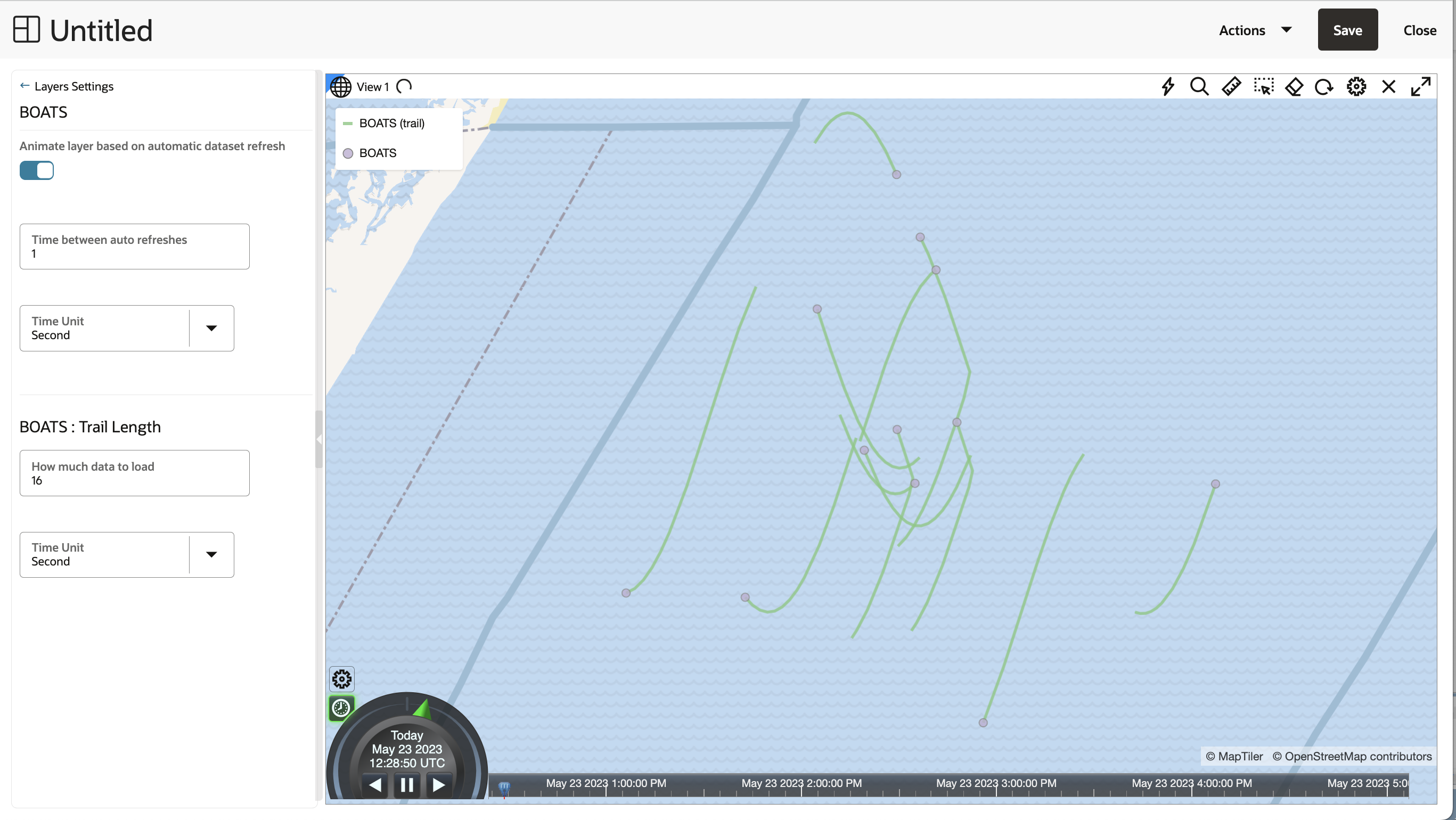3.10.2.5.4 Visualizing Live Moving Objects Dataset
You can visualize live moving objects on a map in Spatial Studio.
The following instructions assume that you have enabled spatiotemporal
for such a dataset and the dataset is already added to the project in the Active Project
page. See Configuring Spatiotemporal for Live Moving Objects Dataset for more information.
Parent topic: Visualizing Spatiotemporal Datasets
